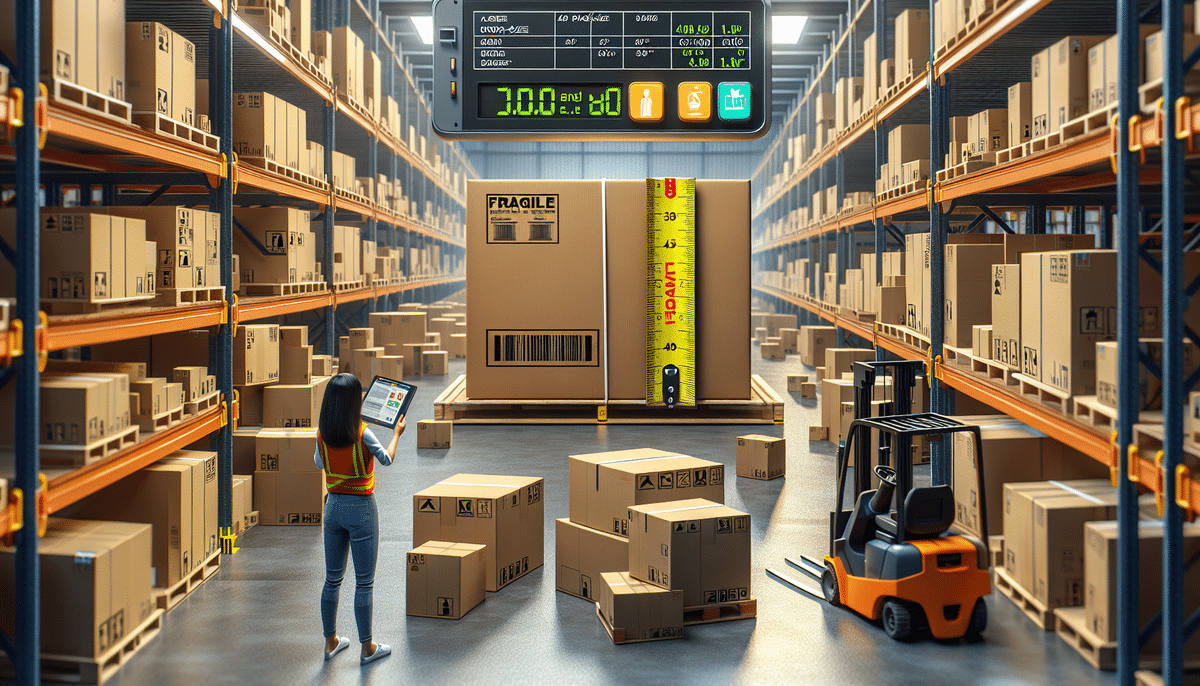Shipping large packages can be challenging. It requires extra care, attention to detail, and proper handling throughout the process. A package is considered large when it exceeds standard size and weight thresholds. When shipping packages with a second-longest side exceeding 30 inches, certain factors can significantly impact the successful delivery of your package. In this article, we discuss everything you need to know about shipping large packages, including measuring your package correctly, choosing the right carrier, and saving money on shipping.
Challenges of Shipping Large Packages
Shipping large packages presents several challenges that can affect both the sender and the recipient. Understanding these challenges is crucial to ensure a smooth shipping process.
Size and Weight Limitations
Carriers have specific size and weight limits for packages. Exceeding these limits can result in additional fees or limited shipping options. For instance, UPS and FedEx have different thresholds for oversized packages, which can impact your shipping strategy.
Increased Risk of Damage or Loss
Large packages are more susceptible to damage or loss during transit due to multiple handling points and the complexity of logistics networks. According to the U.S. Postal Service, the rate of package damage increases with size and weight.
Higher Shipping Costs
Shipping larger packages typically incurs higher costs due to increased material usage, longer transit times, and the need for specialized handling. For example, shipping a package that exceeds standard dimensions can cost up to 50% more than a standard-sized package.
Special Handling Requirements
Oversized packages may require special equipment, such as forklifts or pallet jacks, to move them, especially in warehouses and shipping facilities. This necessity can lead to delays and additional fees.
Preparing Your Large Package for Shipping
Proper preparation of your large package is essential to ensure it arrives safely and within budget. This involves accurately measuring, weighing, and packaging your items.
Understanding Package Dimensions
A package is considered large if its second-longest side exceeds 30 inches. For example, a package measuring 20 inches by 30 inches by 40 inches falls into this category. Different carriers may have varying definitions, so it's important to verify with your chosen carrier.
Correct Measurement Techniques
Measure your package by its longest side first, followed by the second-longest and the shortest sides. Calculate the cubic size by multiplying length, width, and height. Accurate measurements help avoid unexpected fees. Resources like FedEx's packaging guide offer detailed instructions.
Determining Package Weight
Weighing your package accurately ensures compliance with carrier weight restrictions. Exceeding weight limits can result in additional charges or rejection of the package. Use a reliable scale and account for all packing materials to ensure accuracy.
Selecting Proper Packaging Materials
Use sturdy and durable materials such as double-walled corrugated cardboard boxes. Additional padding like bubble wrap, packing peanuts, or foam can protect your items from damage. For fragile items, consider using custom packaging solutions to provide extra protection.
Choosing the Right Shipping Carrier
Selecting the appropriate carrier is vital for the successful shipment of large packages. Factors to consider include cost, delivery time, carrier capabilities, and customer service.
Evaluating Carrier Limitations
Different carriers have varying limitations on package size, weight, and destinations. For instance, USPS allows packages up to 70 pounds, while FedEx offers more options for heavier shipments. Assess your package's needs against carrier offerings.
Comparing Costs and Delivery Times
Shipping large packages often involves higher costs. Compare rates from multiple carriers to find the best balance between cost and delivery speed. Tools like Parcel Monkey can help compare shipping rates across different carriers.
Considering Insurance and Coverage
Insurance is crucial when shipping valuable or fragile items. Evaluate the insurance options offered by carriers and decide if additional coverage is necessary. FedEx Insurance and UPS Insurance provide more details on coverage options.
Checking Destination and International Shipping Options
If shipping internationally, ensure the carrier can deliver to your destination country and understand any additional requirements, such as customs forms or prohibited items. Refer to carrier-specific guidelines for international shipping, such as UPS International Shipping or FedEx International Shipping.
Securing and Protecting Your Large Package
Properly securing your package ensures its safety during transit and minimizes the risk of damage or loss.
Properly Securing the Package
Use high-quality packing tape to seal all openings securely. Reinforce corners and edges to prevent the box from weakening during handling. Use straps or bands for additional security if necessary.
Using Appropriate Labeling
Clearly label your package with the correct shipping and return addresses. Include handling labels such as "Fragile" or "This Side Up" to inform handlers of the package's requirements. Proper labeling aids in correct handling and reduces the risk of damage.
Selecting Shipping Insurance
Choose a shipping insurance plan that covers the full value of your package. Assess whether the carrier’s standard coverage is sufficient or if purchasing additional insurance is necessary. Reliable sources like InsureShip provide options for shipping insurance.
Cost-Saving Strategies for Shipping Large Packages
Shipping large packages can be expensive, but several strategies can help reduce costs without compromising safety or delivery speed.
Comparing Carrier Rates
Compare shipping rates from multiple carriers to identify the most cost-effective option. Use online comparison tools or request quotes directly from carriers to determine the best pricing for your needs.
Utilizing Flat-Rate Shipping
Flat-rate shipping options allow you to ship packages of various sizes at a predetermined price. This can be cost-effective for heavy or oversized packages. For example, FedEx One Rate offers flat-rate shipping for specific box types.
Shipping in Bulk
Shipping multiple packages together or utilizing bulk shipping rates can lower the cost per package. Discuss bulk shipping options with your carrier to take advantage of discounts and negotiated rates.
Taking Advantage of Discounts
Carriers often offer discounts for frequent shippers, business accounts, or through partnerships. Explore available discount programs or negotiate rates with your carrier to maximize savings.
Avoiding Common Mistakes When Shipping Large Packages
Avoiding typical errors can lead to a more efficient and cost-effective shipping experience. Here are common pitfalls to watch out for:
- Incorrect Measurements: Ensure accurate measuring of all sides to prevent unexpected fees or shipping delays.
- Inadequate Packaging: Use appropriate materials and techniques to protect your items from damage.
- Choosing the Wrong Carrier: Select a carrier that aligns with your package's size, weight, and destination requirements.
- Neglecting Insurance: Failing to insure valuable items can lead to significant losses in case of damage or loss.
- Ignoring Carrier Guidelines: Each carrier has specific packaging and labeling requirements; adhering to them ensures smooth shipping.
International Shipping Considerations for Large Packages
Shipping large packages internationally involves additional complexities, including different regulations, customs procedures, and potential fees.
Understanding Regulations and Customs
Each country has its own set of import regulations and prohibited items. Research the destination country’s customs rules to ensure compliance and avoid shipment delays. The U.S. Customs and Border Protection website offers comprehensive information on importing goods.
Proper Labeling for International Shipments
Accurate and detailed labeling is crucial for international shipments. Include a clear description of the contents, their value, and the purpose of the shipment to streamline customs clearance.
Tracking and Monitoring
Use tracking services to monitor your package’s progress and receive updates on its status. This is especially important for international shipments, where unforeseen delays can occur.
Handling and Receiving Your Delivered Package
Proper handling after delivery ensures that your large package remains intact and that any issues can be addressed promptly.
Inspecting Upon Arrival
Immediately inspect the package for any signs of damage or tampering. Document any issues and report them to the carrier as soon as possible to initiate claims if necessary.
Safe Unpacking Practices
When unpacking, use appropriate tools and methods to prevent injury or further damage to the contents. Follow any handling instructions provided by the sender or included in the package.
Returning or Exchanging Items
If the package contains items that need to be returned or exchanged, adhere to the carrier’s policies and ensure that you follow proper procedures to avoid additional costs or delays.






















